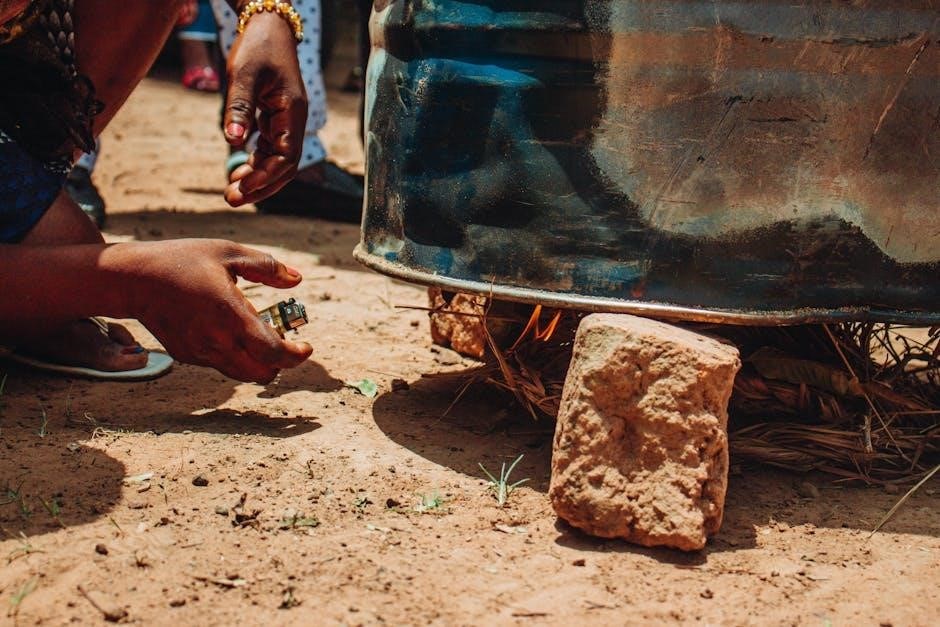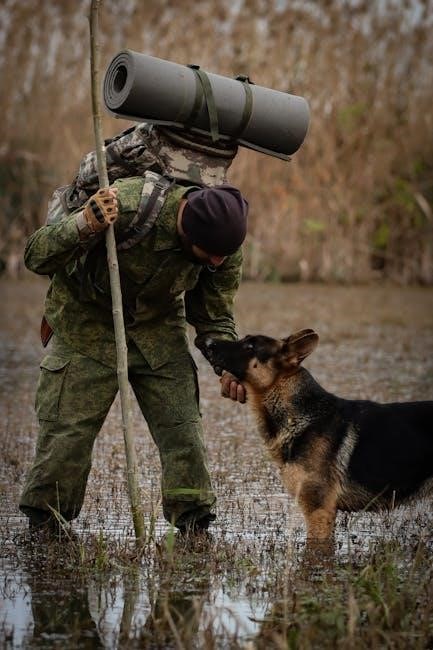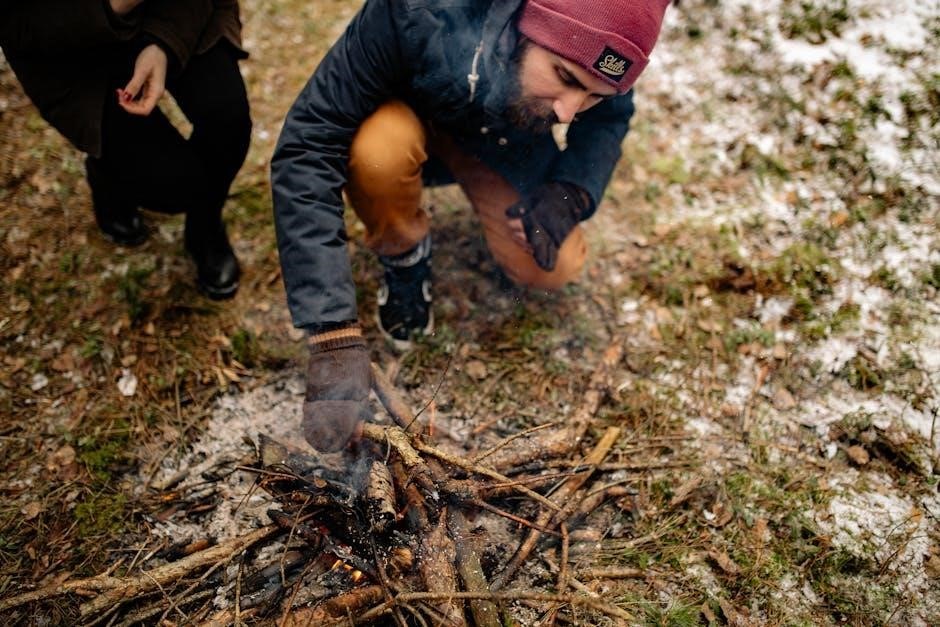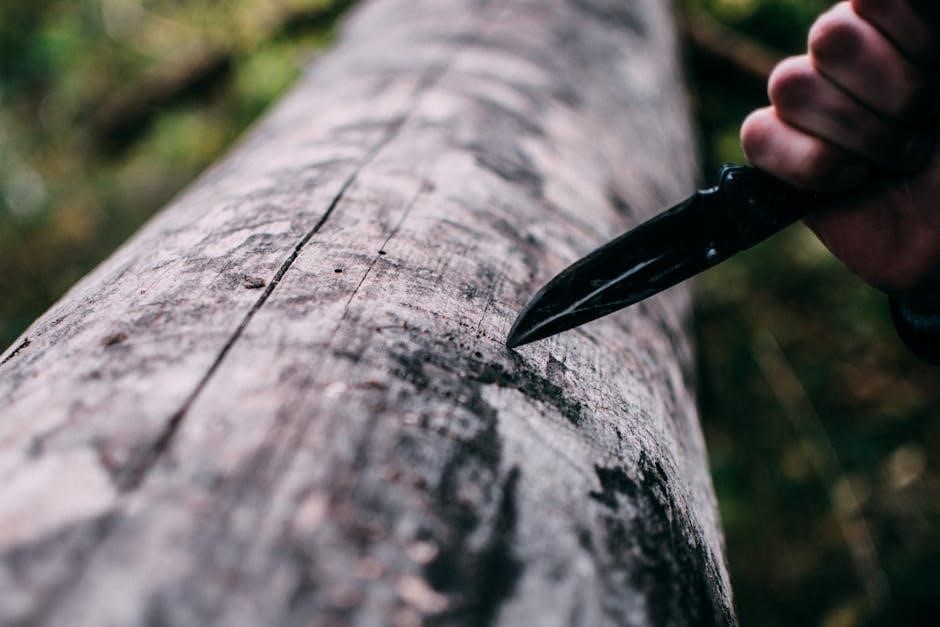survival skills pdf
Survival skills encompass techniques for thriving in challenging environments, detailed in numerous PDF guides. These resources, exceeding 100 files, cover essential knowledge.
PDF documents outline everything from bug-out bag setup to advanced strategies, ensuring preparedness for diverse scenarios, including those mirroring ARK: Survival Evolved.
A comprehensive 101 Survival Skills checklist is available, aiding in long-term self-sufficiency, like establishing farms and preserving food—vital for resilience.
What are Survival Skills?Survival skills, extensively documented in available PDF resources, represent a compilation of techniques enabling individuals to sustain life in adverse conditions. These skills, exceeding 100 files worth of information, range from basic first aid to complex shelter construction, mirroring challenges found in games like ARK: Survival Evolved.
PDF guides detail methods for procuring food and water, navigating without technology, and building fires—essential for both short-term emergencies and long-term self-reliance. A 101 Survival Skills checklist provides a structured approach to mastering these vital competencies, ensuring preparedness.
Why Learn Survival Skills?Learning survival skills, as detailed in numerous PDF guides, provides self-reliance and resilience in unpredictable situations. Over 100 files offer knowledge applicable to real-world emergencies, or even immersive experiences like ARK: Survival Evolved, fostering adaptability.
PDF resources emphasize preparedness for natural disasters, wilderness encounters, or societal disruptions. Mastering these skills—from fire-starting to food preservation—enhances confidence and the ability to overcome adversity. The 101 Survival Skills checklist promotes a proactive mindset, ensuring readiness for any challenge.

PDF guides detail crucial gear for survival, including “bug-out bag” essentials. These resources, exceeding 100 files, outline tools and equipment for self-sufficiency.
Preparation, mirroring ARK: Survival Evolved needs, involves selecting appropriate tools for shelter building, trapping, and resource procurement—all covered in PDFs.
Bug Out Bag EssentialsPDF resources extensively detail the contents of a vital “bug-out bag,” emphasizing preparedness for rapid evacuation. These guides, numbering over 100, recommend prioritizing essential items for short-term survival, mirroring the resourcefulness demanded in games like ARK: Survival Evolved.
Key components include water purification tools, non-perishable food supplies, first-aid kits, navigation aids (maps and compasses), shelter materials, fire-starting implements, and versatile tools. PDF checklists ensure nothing is overlooked, covering everything from clothing and hygiene items to self-defense tools and communication devices, fostering self-reliance.
Tools for Survival: Making & UsingPDF guides highlight the importance of both carrying pre-made tools and learning to craft them in the wild. These resources, exceeding 100 files, detail methods for creating essential implements from natural materials, echoing the crafting aspects of ARK: Survival Evolved.
Skills covered include flint knapping for creating blades, constructing digging sticks, fashioning containers from bark, and building simple traps. PDF instructions emphasize resourcefulness, teaching how to repurpose found objects and maximize efficiency, fostering self-sufficiency and adaptability in challenging environments.
Navigation & OrientationPDF survival manuals prioritize the ability to determine location and direction, crucial for avoiding becoming lost. These guides, numbering over 100, detail techniques beyond modern technology, mirroring the exploratory nature of games like ARK: Survival Evolved.
Essential skills include utilizing natural navigation cues – sun, stars, and terrain features – alongside map reading and compass use. PDF resources emphasize understanding contour lines and declination, ensuring accurate positioning and safe travel, even in unfamiliar landscapes, promoting confident exploration.
Map Reading & Compass SkillsPDF survival guides extensively cover topographic map interpretation, a cornerstone of wilderness navigation. These resources, exceeding 100 files, detail understanding contour lines, symbols, and scales, vital for planning routes and assessing terrain, much like strategizing in ARK: Survival Evolved.
Compass skills, as outlined in these PDFs, include taking bearings, following a course, and triangulating position. Mastering these techniques, alongside map reading, ensures accurate orientation and safe travel, even without GPS, fostering self-reliance and informed decision-making in any environment.

PDF survival manuals detail constructing both natural shelters and more elaborate constructed shelters. They cover material selection and considerations for protection, mirroring ARK’s base-building.
These guides emphasize adapting to the environment, crucial for long-term survival and resilience, as highlighted in comprehensive checklists.
Natural SheltersPDF survival guides extensively cover utilizing the environment for immediate protection. These resources detail identifying and adapting existing formations like caves, rock overhangs, and dense vegetation for shelter.
Survival skills PDFs emphasize leveraging natural features to minimize energy expenditure, crucial in emergency situations. They explain how to reinforce these natural structures with available materials – branches, leaves, and mud – for improved insulation and weather resistance.
Understanding microclimates and selecting locations offering natural windbreaks or sun exposure are key skills detailed within these guides, mirroring the strategic base-building found in games like ARK: Survival Evolved.
Constructed SheltersSurvival skills PDF guides dedicate significant sections to building shelters from scratch, vital when natural options are limited. These resources detail various designs – lean-tos, A-frames, and debris huts – outlining material requirements and construction techniques.
PDFs emphasize efficient use of resources, mirroring the crafting aspects of games like ARK: Survival Evolved. They provide step-by-step instructions, including knot tying (detailed elsewhere), for securing structures and maximizing stability.
Considerations for insulation, waterproofing, and camouflage are thoroughly covered, ensuring constructed shelters offer effective protection against the elements and potential threats.
Shelter Materials & ConsiderationsSurvival skills PDF guides meticulously detail suitable shelter materials, prioritizing readily available resources. These include branches, leaves, mud, snow, and even salvaged materials, echoing resourcefulness seen in ARK: Survival Evolved.
PDFs emphasize assessing material properties – insulation value, durability, and water resistance – for optimal shelter construction. Considerations extend to location, avoiding floodplains or unstable ground.
Crucially, guides address camouflage and concealment, vital for security. They also highlight the importance of minimizing environmental impact, promoting sustainable practices during prolonged survival scenarios.

Survival skills PDF resources detail methods like friction and flint & steel. They emphasize finding and preparing tinder, crucial for ignition, mirroring challenges in ARK.
PDF guides prioritize fire safety and efficient management, vital for warmth, cooking, and signaling—essential survival components.
Fire Starting Methods (Friction, Flint & Steel)Survival skills PDF guides extensively cover traditional fire-starting techniques. Friction-based methods, like the bow drill and hand drill, demand practice and suitable wood types, detailed in downloadable resources.
Flint and steel, another core skill, requires char cloth for catching sparks, a process thoroughly explained in these PDF documents. Mastering these techniques provides redundancy, crucial when lighters fail.
These resources often include diagrams and step-by-step instructions, mirroring the resourcefulness needed in games like ARK: Survival Evolved, where fire is paramount for defense and sustenance.
Successful implementation relies on understanding wood properties and spark generation, knowledge readily available within these comprehensive PDF guides.
Finding & Preparing TinderSurvival skills PDF resources emphasize the critical role of tinder in successful fire starting. Natural tinder sources, like birch bark, pine needles, and dry grasses, are detailed with identification guides within these downloadable documents.
Preparation is key; tinder must be finely shredded and completely dry. PDF guides illustrate techniques for processing materials, including creating char cloth from cotton, enhancing its spark-catching ability.
Understanding local flora and fauna for optimal tinder selection is vital, mirroring the resourcefulness needed in survival scenarios. These PDFs often include regional plant lists.
Effective tinder preparation dramatically increases fire-starting success, a skill crucial for warmth, cooking, and signaling, as highlighted in comprehensive survival guides.
Fire Safety & ManagementSurvival skills PDF guides dedicate significant sections to fire safety, stressing the importance of creating a firebreak – clearing a ten-foot radius around the fire to prevent spread. These resources detail responsible fire management techniques for minimizing environmental impact.
PDF documents emphasize constant supervision, never leaving a fire unattended, and having readily available extinguishing materials like water or sand. They also cover wind direction considerations.
Properly extinguishing a fire is paramount; PDFs instruct on thoroughly dousing embers and stirring ashes to ensure complete extinguishment, preventing wildfires.
Understanding these safety protocols, detailed in downloadable guides, is crucial for responsible wilderness survival, mirroring the careful resource management in games like ARK: Survival Evolved.

Survival skills PDF guides detail locating water sources and purification methods. They also cover foraging for edible plants, trapping, and fishing—essential for sustenance.
PDF resources emphasize identifying safe plants and constructing effective traps, mirroring resourcefulness needed in survival scenarios.
Water Sources & PurificationSurvival skills PDF documents extensively cover identifying potential water sources in diverse environments, ranging from rainfall collection to locating springs and streams. Crucially, these guides emphasize that raw water is rarely safe for consumption.
PDF resources detail multiple purification techniques, including boiling—the simplest method—and constructing improvised filters using charcoal, sand, and gravel. They also discuss chemical purification using iodine or chlorine tablets, outlining proper dosage and safety precautions.
Understanding these methods, as detailed in the PDFs, is paramount for preventing waterborne illnesses and ensuring long-term survival, mirroring the challenges faced in games like ARK: Survival Evolved.
Foraging for Edible PlantsSurvival skills PDF guides dedicate significant sections to identifying edible plants, stressing the critical importance of accurate identification to avoid poisonous varieties. These resources often include detailed illustrations and descriptions to aid in plant recognition.
PDF documents emphasize learning regional flora, as edible plants vary drastically by location. They also caution against consuming any plant unless 100% certain of its safety, advocating for the “universal edibility test” as a last resort.
Successfully foraging, as detailed in these PDFs, provides a sustainable food source, vital for long-term survival, much like resource gathering in ARK: Survival Evolved.
Trapping & Snaring AnimalsSurvival skills PDF resources extensively cover trapping and snaring, outlining various techniques for procuring protein in a wilderness setting. These guides detail constructing snares using readily available materials, emphasizing ethical considerations and legal restrictions regarding trapping.
PDF documents illustrate different trap designs – figure-four traps, snare loops, and deadfalls – explaining their construction and optimal placement for targeting specific animals. They stress the importance of checking traps regularly.
Mastering these skills, as presented in these PDFs, offers a crucial food source, mirroring the hunting aspects found within games like ARK: Survival Evolved.
Fishing TechniquesSurvival skills PDF guides dedicate significant sections to fishing, a reliable method for obtaining sustenance. These resources detail constructing improvised fishing gear from natural materials – hooks from bone, lines from plant fibers, and spears from sharpened wood.
PDF documents illustrate various techniques, including line fishing, spear fishing, and building fish traps. They emphasize identifying edible fish species and understanding local fishing regulations.
These PDFs highlight the importance of patience and observation, skills mirroring resourcefulness needed in survival scenarios, even those depicted in games like ARK: Survival Evolved.

Survival skills PDF resources emphasize mastering essential knots—Bowline, Square Knot, and Taut-Line Hitch—for shelter building, trapping, and securing gear effectively.
PDF guides detail knot applications in diverse survival scenarios, mirroring the resourcefulness needed in challenging environments.
Essential Knots (Bowline, Square Knot, Taut-Line Hitch)Survival skills PDF guides consistently highlight three knots as fundamentally crucial: the Bowline, Square Knot, and Taut-Line Hitch. The Bowline creates a secure loop, invaluable for rescue or anchoring. The Square Knot, though simple, is vital for joining ropes – however, it’s crucial to understand its limitations for load-bearing applications.
The Taut-Line Hitch is exceptionally adaptable, allowing for adjustable tension, making it perfect for tent guy lines or creating a secure ridgeline for shelters. Mastering these knots, as detailed in comprehensive PDF resources, provides a foundational skillset for various survival applications, mirroring the practical needs presented in scenarios like ARK: Survival Evolved.
Knot Applications in Survival ScenariosSurvival skills PDF resources emphasize practical knot usage beyond simple tying. The Bowline secures a climbing line or creates a rescue loop. A Square Knot joins shelter poles, though reinforced with caution. The Taut-Line Hitch adjusts tarp tension, crucial for weather protection, and secures a clothesline.
These applications extend to trapping snares, constructing improvised litters, and securing gear. PDF guides detail how knots aid in building shelters, similar to those needed in ARK: Survival Evolved. Understanding these applications transforms theoretical knowledge into life-saving skills, enhancing preparedness in any survival situation.
First Aid & Medical SkillsSurvival skills PDF guides detail basic wound care, treating injuries, and improvising medical supplies. These resources are vital for self-reliance in remote settings.
PDF documents cover essential techniques for managing illness and injury, mirroring the challenges faced in survival simulations.
Basic Wound CareSurvival skills PDF resources emphasize immediate action for wound management. Initial steps involve controlling bleeding through direct pressure and elevation, detailed in comprehensive guides.
Cleaning wounds thoroughly with purified water—sourced and treated as outlined in PDF documents—is crucial to prevent infection. Improvised bandages, utilizing clean cloth, are frequently detailed.
PDF guides also cover recognizing infection signs (redness, swelling, pus) and utilizing natural antiseptics when available. Proper wound care significantly increases survival chances, mirroring scenarios in games like ARK: Survival Evolved.
These skills are foundational for self-sufficiency.
Treating Common Injuries & IllnessesSurvival skills PDF guides detail managing common ailments with limited resources. Sprains and fractures require immobilization using splints crafted from available materials, as illustrated in detailed diagrams.
Hypothermia and heatstroke protocols are crucial, emphasizing shelter construction and regulating body temperature—skills frequently highlighted in PDF checklists.
Recognizing and treating dehydration, alongside utilizing foraged plants for medicinal purposes (with caution!), are also covered. These PDF resources prepare individuals for scenarios demanding self-reliance, akin to ARK: Survival Evolved challenges.
Knowledge is paramount for survival;
Improvised Medical SuppliesSurvival skills PDF resources emphasize resourcefulness in medical emergencies. Creating bandages from clean cloth, utilizing plantain leaves for wound healing, and fashioning slings from clothing are key techniques.
Charcoal acts as an absorbent for poisoning, while boiled water serves as a sterile cleansing agent—information readily available in comprehensive PDF guides.
These PDF documents detail constructing sutures from natural fibers and utilizing tree resin as an antiseptic, mirroring the self-sufficiency needed in scenarios like ARK: Survival Evolved.
Improvisation is vital when conventional supplies are unavailable.

Survival skills PDF guides detail sustainable living: soap making, farming, seed collection, and animal husbandry.
These PDF resources emphasize self-reliance, mirroring the extended survival aspects found in games like ARK: Survival Evolved.
Soap MakingSurvival skills PDF resources highlight soap making as crucial for long-term hygiene, preventing disease in off-grid scenarios. Historically, lye – derived from wood ash – was essential, a technique detailed in many guides.
These PDF documents explain sourcing fats (animal or plant-based) and the saponification process, transforming them into usable soap. Mastering this skill reduces reliance on external supplies, mirroring the self-sufficiency needed in challenging environments like those presented in ARK: Survival Evolved.
Proper soap production safeguards health, a fundamental aspect of sustained survival, as outlined in comprehensive survival checklists.
Farming & Seed CollectionSurvival skills PDF guides emphasize farming and seed collection for sustainable food sources, vital for long-term resilience. These resources detail soil preparation, crop selection, and companion planting techniques for maximizing yields.
Seed saving is paramount, ensuring future harvests and genetic diversity. PDF documents explain proper drying and storage methods to maintain viability, mirroring the resourcefulness needed in games like ARK: Survival Evolved.
Establishing a farm provides a stable food supply, reducing dependence on foraging and hunting, a cornerstone of self-sufficiency as detailed in survival checklists.
Raising Animals for SustenanceSurvival skills PDF resources highlight animal husbandry as a crucial element of long-term self-reliance. Guides detail selecting appropriate livestock – chickens, rabbits, goats – based on resource availability and climate conditions.
PDF documents cover essential aspects like shelter construction, feeding strategies, and disease prevention, mirroring the challenges faced in survival scenarios. This parallels resource management in games like ARK: Survival Evolved.
Raising animals provides meat, eggs, milk, and valuable resources like manure for fertilizer, bolstering food security and overall sustainability, as outlined in comprehensive survival checklists.

Survival skills PDF guides detail methods like drying, smoking, salting, and fermentation to extend food supplies. These techniques, crucial for long-term survival,
ensure sustenance without refrigeration, mirroring strategies for resource management in challenging environments.
Drying & SmokingSurvival skills PDF resources extensively cover drying and smoking as vital food preservation techniques. Drying, utilizing sun or low heat, removes moisture, inhibiting bacterial growth. This method works exceptionally well for meats, fruits, and vegetables, extending their shelf life considerably.
Smoking adds flavor while further preserving food through chemical compounds in the smoke. Both methods align with long-term survival strategies, mirroring resourcefulness needed in scenarios like ARK: Survival Evolved.
Detailed guides within these PDFs outline construction of drying racks and smokehouses, alongside optimal wood choices for smoking, ensuring effective preservation.
Salting & FermentationSurvival skills PDF guides detail salting and fermentation as crucial food preservation methods. Salting draws out moisture, creating a hostile environment for bacteria, effectively preserving meats and fish. These PDFs provide ratios and techniques for dry-brining and wet-curing, maximizing preservation.
Fermentation utilizes beneficial microorganisms to transform food, creating lactic acid which inhibits spoilage. This applies to vegetables like cabbage (sauerkraut) and can extend food availability.
These techniques, vital for long-term self-sufficiency, echo the resourcefulness needed in challenging environments, similar to those found in ARK: Survival Evolved.
Root CellaringSurvival skills PDF resources emphasize root cellaring as a low-tech, effective food storage solution. These guides detail constructing underground spaces – or utilizing existing basements – to maintain cool, humid conditions ideal for preserving root vegetables like potatoes and carrots.
Proper ventilation and temperature control, outlined in the PDFs, are key to preventing spoilage. Root cellaring minimizes reliance on refrigeration, a critical advantage in long-term survival scenarios.
This method, mirroring resourcefulness needed in games like ARK: Survival Evolved, ensures a stable food supply throughout the winter months.

Survival skills PDF guides detail advanced techniques like camouflage, signaling, and self-defense. Mastering these skills, crucial for resilience, enhances your ability to thrive.
These PDFs prepare you for complex scenarios, mirroring the challenges found in survival-focused games like ARK: Survival Evolved.
Camouflage & ConcealmentSurvival skills PDF resources emphasize camouflage and concealment as vital for evading detection. These guides detail techniques for blending into diverse environments, utilizing natural materials for effective disguise.
Mastering these skills, mirroring strategies in games like ARK: Survival Evolved, significantly increases your chances of survival. PDF documents cover ghillie suit construction, face paint application, and utilizing shadows for concealment.
Effective camouflage isn’t just about visual blending; it also includes scent control and minimizing noise. Advanced techniques detailed in these guides focus on disrupting your silhouette and movement patterns, making you nearly invisible to potential threats.
Signaling for RescueSurvival skills PDF guides dedicate significant attention to signaling for rescue, a crucial element of wilderness survival. These resources detail various methods, from creating visible signals to utilizing reflective surfaces for attracting attention.
Documents outline building signal fires, constructing ground-to-air signals using contrasting materials, and employing mirrors or polished metal to flash sunlight. Understanding these techniques, akin to strategies in ARK: Survival Evolved, dramatically increases rescue probability.
PDFs also cover utilizing whistles, brightly colored clothing, and even improvised flags to maximize visibility. Prioritizing clear, concise signals is key, ensuring rescuers can quickly locate your position.
Self-Defense TechniquesSurvival skills PDF resources acknowledge the potential need for self-defense in hostile environments. While avoidance is paramount, these guides detail basic techniques for protecting oneself against both human and animal threats.
Documents often cover improvised weapons creation, utilizing readily available materials for defense. They emphasize situational awareness, de-escalation tactics, and understanding personal limitations. These skills, mirroring the challenges in ARK: Survival Evolved, are vital for survival.
PDFs stress that self-defense is a last resort, focusing on escape and evasion whenever possible, but preparedness is key to increasing chances of survival.

Survival skills PDF guides highlight the crucial role of mental fortitude. Maintaining positivity, resilience, and sound decision-making are paramount for overcoming adversity.
Effective risk assessment, detailed in these PDFs, is vital for navigating challenging situations and maximizing chances of long-term survival.
Maintaining Positivity & ResilienceSurvival skills PDF resources consistently emphasize the psychological aspects of enduring hardship. A positive outlook isn’t merely optimistic; it’s a practical tool for problem-solving and conserving energy. Resilience, the ability to bounce back from setbacks, is cultivated through mental preparation and acceptance of unavoidable challenges.
These guides detail techniques for managing fear and stress, recognizing that panic can be as dangerous as any physical threat. Cultivating a determined mindset, focusing on achievable goals, and celebrating small victories are all strategies outlined within these PDF documents. Remember, a strong spirit is often the most valuable survival tool.
Risk Assessment & Decision MakingSurvival skills PDF guides highlight that informed decisions are paramount. Effective risk assessment involves identifying potential hazards – mirroring the dangers in games like ARK: Survival Evolved – and evaluating their likelihood and potential impact. These resources emphasize a systematic approach, prioritizing needs and avoiding impulsive actions.
The PDF documents detail methods for weighing options, considering limited resources, and accepting calculated risks. They stress the importance of gathering information, observing surroundings, and adapting plans as circumstances change. Sound judgment, honed through knowledge and practice, significantly increases survival probability.
The post survival skills pdf appeared first on Every Task, Every Guide: The Instruction Portal
.

Recent comments